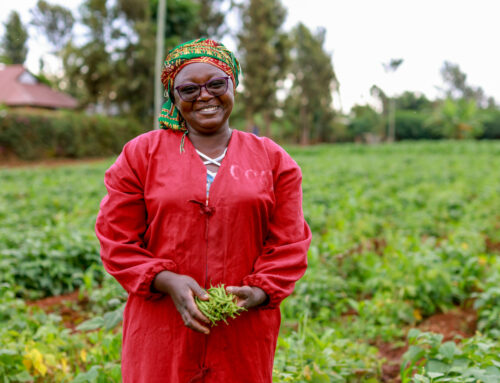The New EU Plant Health Regulation – What does it mean for exporters?
The Plant Health Regulation provides measures for controlling and managing pests depending on the risk they represent from an economic, environmental, social, and agricultural point of view, and according to their impact on the quality of production. By bringing together several measures under a single regime, the regulation simplifies the management of pests and the implementation from private organizations.
In October 2016, the European Parliament and Council adopted Regulation (EU) 2016/2031 on protective measures against plant pests (“Plant Health Law”). On 13 December 2016, the regulation entered into force and will be fully applicable from 14 December 2019 .
The new rules aim to modernise the plant health regime, enhancing more effective measures for the protection of the EU territory and its plants. They also aim to ensure a safe trade, as well as to mitigate the impacts of climate change on the health of crops and forests. Many of these pests and diseases are now more able to survive in Europe than they were before.
The new regulation focuses on four key areas: (i) plant pests, (ii) the import of plants in the EU, (iii) the movement of plants or plant products within the EU and (iv) the introduction of new obligations and responsibilities for professional operators.
i. Plant Pests: The regulation focuses on the prevention of entry or spread of plant pests within the EU. This is regulated depending on their quarantine status or whether they affect the quality of plant reproductive material. With the new regulation plant pests will be organised under these categories:
- Union quarantine pests: Not present at all in the EU territory or, if present, just locally and under official control. Strict measures must be taken to prevent their entry or further spread within the EU, and they have to be eradicated immediately if detected.
- Protected zone quarantine pests: Present in most parts of the Union, but still known to be absent in certain demarcated areas called ‘protected zones’. These pests are thus not allowed to enter and spread within these protected zones.
- Regulated non-quarantine pests: Widely present in the EU territory but since they have an important impact should be guaranteed free or almost free from the pest.
- Priority Pests: Those with the most severe impact on the economy, environment and/or society, consequently enhanced under measures concerning surveys, action plans for their eradication, contingency plans and simulation exercises. The EU Commission released a list of 20 priority pests announced through the official journal on 11 October 2019.
ii. Import of plants: most plants and plant products are allowed to be imported. According to the pest risk these plants may host, they may be subject to strict requirements or may be prohibited to enter.
- Regulated: Before entering the EU, certain plants, plant products and other objects are currently required to have a phytosanitary certificate. This guarantees that they were inspected, and are free from quarantine harmful organisms. With the new regulation, all plants and plant products are required to have a certificate or to have successfully undergone a risk assessment.
- High risk: The Commission provides a list of “high risk” plants, plant products and other objects. As of 14 December 2019, the import of these into the EU will be provisionally prohibited until a full risk assessment is conducted. Countries exporting these crops into the EU are now required to comply with one of four options that show what measures they are taking to ensure that exported produce is pest-free. Most countries have opted to use a systems approach whereby a combination of measures are used pre- and post-harvest to manage the pest, such as to be subjected to an effective cold treatment to ensure freedom from the specific pest or another effective treatment, and this data should be indicated on phytosanitary certificates.
- Temporarily restricted: Where there is not much experience or knowledge of certain plants or plant products and pest risks are still unknown, the regulation provides the possibility of temporary restrictions or a prohibition until more scientific information is available.
- Prohibited: The EU Commission has a list of plants, plant products or other objects which are prohibited from being introduced into the EU, together with the third countries, groups of third countries or specific areas of third countries to which the prohibition applies.
iii. The movement of plants/plant products within the EU: Once imported to the EU, plants, plant products and other objects are required to have a “plant passport”. With the new regulation, this is more extensive.
iv. Obligations for professional operators: As of 14 December 2019, professional operators must notify of any pest they find in their control. They will also be obligated to take immediate precautionary measures to prevent the pest spreading and withdraw any plants, plant products and other objects under their control in which the pest may be present, from the market. For the purpose of more efficient controls, the professional operators will have to be registered by the competent authorities. The professional operators will also have to ensure the traceability of certain plants, plant products and other objects they receive from and transfer to other professional operators.
What are the implications?
According to EPA Monitoring, “the EU’s new Plant Health Regulation adopts a far more comprehensive and proactive precautionary approach than at present”. It will lead to far stricter SPS controls on ‘priority pests’ in ‘high-risk commodities, for which trade will be prohibited without a favourable pest risk assessment, starting from 14 December 2019. In the case of unknown pest risks, the regulation allows for temporary restrictions and emergency import bans.
While the import of most plants and plant products from non-EU countries will, in theory, be allowed, they will be subject to more rigorous conditions. EPA Monitoring affirms this will involve substantial additional costs, both at the level of producers and the ‘competent authority’ in the third country concerned. For small-scale exporters, these additional costs could affect their commercial viability of trading into the EU. Also, due to emergency measures or high-risk crops, exporters are exposed to the risk of rejection when arriving into the EU, because phytosanitary declarations are not detailed enough with regards to prevention measures.
As mentioned, importing high-risk commodities will be prohibited unless and until a detailed pest risk assessment (PRA) has been carried out to determine if imports are acceptable and if they are, under what conditions. These PRAs will only be conducted by the EU authorities ‘on request’, with the third country competent authorities being responsible for providing basic data ‘on the pests and diseases present on the crop’.
Export countries with products potentially deemed high risk are required to make additional financial allocations to their national competent authorities – NPPO’s (National Plan Protection Organizations) and to ensure all necessary data on pest risks is available, where traceability systems will be key. Also, it will be required to make available the necessary infrastructure for effective cold chain along the supply chain, especially important in port terminals.
Consulted sources:
- New EU Regulations on Plant Health Will Be Applicable from 14 December 2019. BakerMckenzie. August 2019. https://www.bakermckenzie.com/en/insight/publications/2019/08/new-eu-regulations-on-plant-health
-
New EU Plant Health Regulation Could Carry Important Implications for Smaller Scale ACP Exporters. EPA Monitoring. 2017. https://epamonitoring.net/491-2/
- European Commission. EU Plant Health Legislation. https://ec.europa.eu/food/plant/plant_health_biosecurity/legislation/new_eu_rules_en



